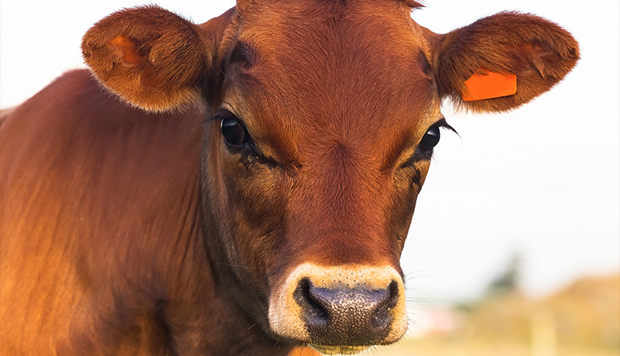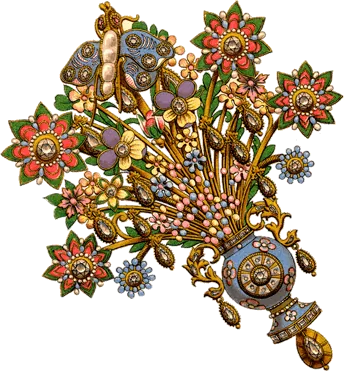How is it, that the greatest source of enmity became the remedy to death itself? Although it defies human logic, this phenomena is expressed throughout Parshat Chukat.
Laws Pertaining to the Red Heifer
Of the Torah’s 613 commandments, none are as mysterious as the laws pertaining to the Red Heifer. In Temple times, the offering of a red cow was made to provide atonement for worshipers who came in contact with the deceased. Without its service, it would be impossible for families and individuals to participate in the Divine Service. In a very real sense, all of the offerings depended on it.
Contamination & Purification
The description of the Red Heifer and its service are described in Numbers 19. Therein, the descendants of Aaron (Kohanim) were directed to select an entirely red cow, slaughter it outside the camp, burn “her skin, her flesh, her blood, even her dung…” together with a piece of cedar wood, a bundle of hyssop and scarlet thread; collect the ashes, mix the ashes with spring water, and sprinkle it on those who came in contact with the dead. In this manner, the ashes of the Red Heifer served a practical purpose in eliminating the contamination brought about by human death. However, its procedure and details provide little explanation as to how this was accomplished.
One of the most baffling aspects of the Red Heifer was that its service had the reverse affect on those who prepared its ashes:
The one who burns it shall immerse his clothing and immerse himself in water; and he shall remain contaminated until evening (Num. 19:7).
While the slaughtering of the Red Heifer and the sprinkling of her ashes procured atonement for those in need of purification, it effectively defiled the kohanim who prepared it. In essence, the law of the Red Heifer seemingly contradicted everything it was supposed to accomplish.
Another peculiar aspect of this offering was that it was slaughtered “outside the camp”. Whereas all other offerings were slaughtered in the Temple courts; in the days of the Temple, the Red Heifer was burned and prepared on the Mount of Olives across the Kidron Valley. These peculiarities and many more, made the offering of the Red Heifer most unique.
Of course, we would be remised not to mention the specification of the cow itself:
And they shall take to you a completely red cow, which is without blemish, and upon which a yoke has not come. You shall give it to Elazar the Kohen; he shall take it to the outside of the camp and someone shall slaughter it in his presence. (ibid. 19:2-3).
The cow was to be spotless and without any defect, it could not contain a single hair of any color other than red, and it was never to have born a yoke or performed labor. What was so special about the Red Cow that, when having its ashes mixed with water, made atonement for all those seeking to draw near in worship?
Parashat Chukat
In view of its distinction, it is essential to read the laws of the Red Heifer against the backdrop of its Torah portion. On the surface, the subjects of chapter 19 seem to have no sequential or chronological relationship to the chapters before or after them. As a general rule, the order of chapters in the Torah are not necessarily chronological (Pesachim 6b). Therefore, the placement of certain sections juxtaposed to others are carefully and strategically placed by its inspired authors.
Parshat Chukat gets its name from the opening words of chapter 19 which introduce the laws of the Red Heifer:
Hashem spoke to Moses and to Aaron, saying: This is the decree (Chukah) of the Torah, which Hashem has commanded, saying… (Num. 19:1).
The word Chukah, means “statute” or “decree;” and represents a category of Torah commands that are generally given with little to no explanation. While laws governing human relationships and social justice are highly rational, i.e. simple to comprehend, Chukim are observed for no other reason than the fact that they are “decrees from heaven.”
The major theme woven throughout Chukat is the idea of human mortality. Over the course of three chapters, we read about the death of Miriam (20:1), the verdict that Moses would die in the wilderness (20:12), and the death of Aaron (20:22-29). In chapter 21, the theme of human mortality and healing is further represented in the bronze snake. Fronting all of these are laws of the Red Heifer, as if to insinuate that the Red Heifer is the remedy to death itself.
The Remedy
Death is the quintessential emblem of impurity. As the Apostle Paul wrote in his letter to the Romans: “For the wages of sin is death... (Rom. 6:23).” It is death that entered the world through sin, and ultimately, sin and death that separates man from the eternal Creator. Naturally, if mankind is to find rectification with God, there has to be a remedy to reconcile the gulf between the supernal-purity of the Divine and what is finite and perishing.
In Judaism, no sin has carried greater ramifications for Israel than the sin of the Golden of the Calf; in fact, we are still suffering the effects of it today. Many aspects of the service allude to the idea that the Red Cow atoned for the sin of the Golden Calf. Its color is red, which resembles the complexion of gold. It is reduced to ashes and mixed with water, just as Moses burned the Golden Calf and ground it to a powder, and scattered it on the water (Ex. 32:20).
The color red also symbolizes sin, as the Prophet writes:
Come now, let us debate, says the Lord. If your sins prove to be like crimson, they will become white as now; if they prove to be as red as crimson dye, they shall become as wool. (Isa. 1:18).
Red also alludes to blood. According to Torah, blood represents life itself:
For the soul of the flesh is in the blood and I have assigned it for you upon the Altar to provide atonement for your souls (Lev. 17:11).
According to Torah, a completely 100% red cow served as the remedy for death. It involved taking the most striking emblem of life – a heifer that is pure red, the color of blood, and that has never been made to endure the burden of a yoke – and reducing it to ash. The Torah describes death in the gripping words God spoke to Adam: “Dust you are, and to dust you shall return.” Having the Red Cow reduced to “dust” as it were, the dust is dissolved into living water, and from water comes new life.
How is it then, that the greatest source of Israel’s enmity, the symbol of the Golden Calf and death itself, became the greatest source of life? Although it defies human logic, this pattern expressed throughout Parshat Chukat:
Hashem said to Moses, “Make yourself a fiery serpent and place it on a pole, and it will be that anyone who was bitten will look at it and live.” (Num. 21:10).
This phenomena is a characteristic of Messiah as well: "As Moses lifted up the serpent in the wilderness, even so must the Son of Man be lifted up, so that whoever believes will in Him have eternal life (Jn. 3:14-15)." As history has shown, the greatest source of enmity took on the brunt of human suffering. Bearing the very image of death itself, Yeshua was escorted outside the gates of Jerusalem and crucified on a Roman stake, although he was undeserving of death. There was nothing on that day to suggest that Yeshua of Nazareth was anything but a criminal. Yet, he knew no sin. Hence, his righteous death procured atonement for countless generations that demonstrate a life of faithfulness and hope in the power of his resurrection. In this regard, the writer of Hebrews makes a connection to the Red Heifer:
"If the blood of bulls and goats and the ashes of a heifer, sprinkling the unclean, sanctifies for the purifying of the flesh, how much more shall the blood of Messiah, who through the eternal Spirit offered Himself without spot to God, cleanse your conscience from dead works to serve the living God?" (Hebrews 9:13-14).


